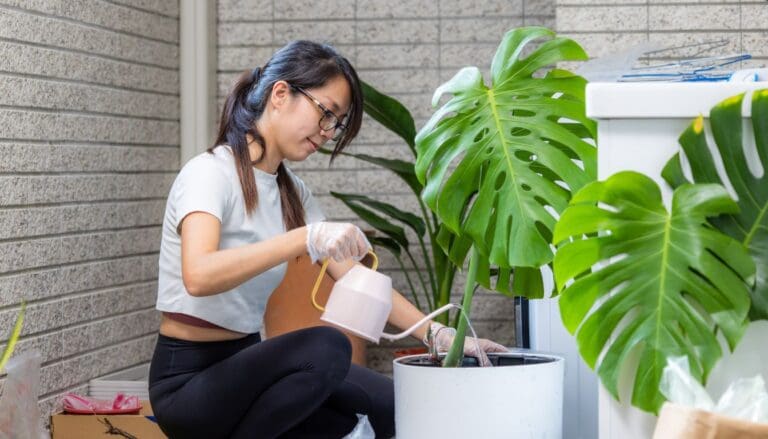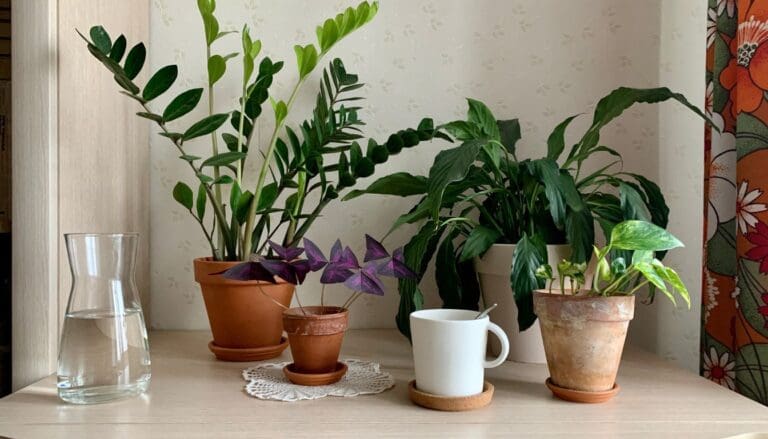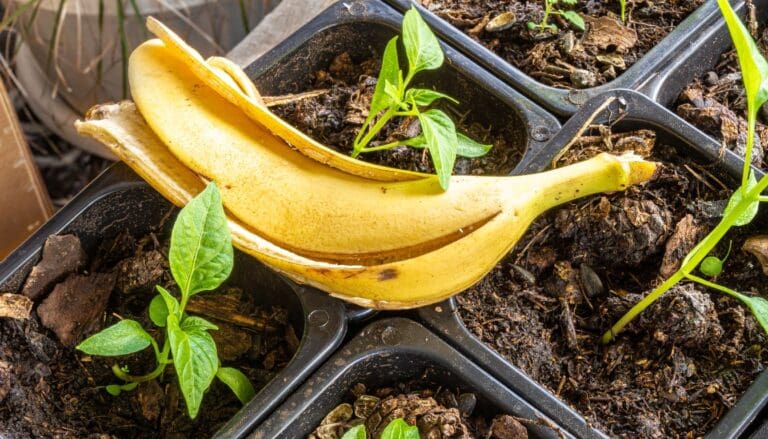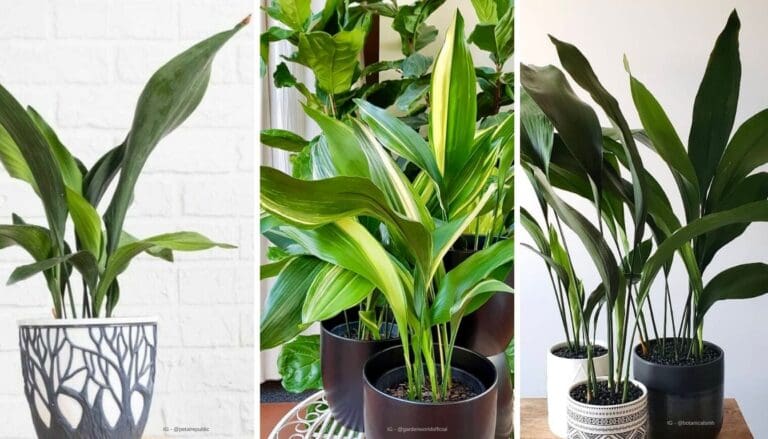6 Growth Boosting Tricks for Houseplants Every Plant Lover Should Know
I love having houseplants around my home, but honestly, sometimes they just need a little extra help to really thrive. It’s a bit discouraging when I see my plants looking droopy or not growing as much as I hoped.
Over time, I’ve picked up a few simple tricks that seem to make a real difference. These tips are easy to try, and honestly, you don’t have to be a plant expert—just a little curious and willing to experiment.

Please note: Simplify Plants is reader-supported. As an Amazon Associate, I earn from qualifying purchases made by our readers with no extra cost added to you all! Some links in the post are affiliate links and I get a commission from purchases made through links in the post.
1) Use diluted fish emulsion once a month
I like to feed my houseplants diluted fish emulsion about once a month. It gives them extra nutrients that regular potting soil might not offer.
Fish emulsion is basically a liquid fertilizer made from fish waste. It’s gentle and works for most houseplants, so I just mix it with plenty of water and follow the bottle’s instructions.
I like that it’s natural and, if I don’t go overboard, it’s pretty safe for the roots. My plants usually look greener and perkier after a feeding or two.
Once a month is enough—feeding more often can lead to salt buildup in the soil, which is a headache you don’t want. I always make sure the soil is already damp before adding the mix.
The smell? Yeah, it’s pretty strong, but it fades fast. I just wash my hands after, and honestly, it’s worth it for healthier plants.
2) Place plants near east-facing windows

I always try to keep my plants near east-facing windows. They get gentle morning sunlight, which seems just right for most indoor plants.
Morning light is softer than afternoon sun, so plants don’t get scorched or dried out. It’s especially good for those that want bright light but not too much heat.
My plants really seem to thrive when they catch those first rays of the day. Their leaves stay green, and I notice new growth popping up more often.
I make sure nothing big blocks the window—no heavy curtains or bulky furniture. It’s surprising how much difference that makes.
East-facing windows are perfect for popular houseplants like pothos, spider plants, and peace lilies. I always suggest this spot to friends who are new to plants.
When my window ledge gets crowded, I use plant stands to give everyone a fair shot at the sun. Sometimes I rotate the pots so each side gets some light, which helps prevent lopsided growth.
A little morning sun really does wonders for plant happiness. Picking the right window can be the difference between blah and beautiful.
3) Apply neem oil to prevent pests

Neem oil is a natural way I keep my houseplants safe from bugs. It comes from the neem tree and is pretty popular among gardeners. I like it because it’s gentle and doesn’t seem to bother most plants.
If I spot tiny bugs or sticky leaves, I mix up a little neem oil with water and spray the leaves, top and bottom. It helps keep pests like aphids, spider mites, and whiteflies in check.
Neem oil isn’t instant magic, but after a few days or weeks, I usually see fewer bugs. I’ll spray again every week or two if needed.
I try not to spray in the middle of the day—morning or evening is better so the leaves don’t get sunburned. It’s always smart to test neem oil on one leaf first, just in case.
If the test leaf looks fine after a day, I go ahead and treat the whole plant. It also leaves the foliage looking shiny and fresh, which is a nice bonus.
Neem oil is safe for kids and pets when used right. It’s a handy tool for keeping my plants and home happy.
4) Rotate plants weekly for even sunlight

I make it a habit to rotate my plants every week. This way, every side gets its fair share of sunlight.
If I forget, one side can get leggy or pale while the other stays in the shade. Just turning the pot a little each week keeps things balanced.
I usually set a reminder on my phone so I don’t space out and forget. It’s a tiny effort for a big payoff.
Even sunlight helps leaves stay bright and growth stay strong. I notice my plants look fuller and straighter if I keep up with this routine.
Doesn’t matter if it’s on a windowsill or a shelf—if the light’s coming from one direction, a quick spin each week really helps.
5) Increase humidity with a pebble tray
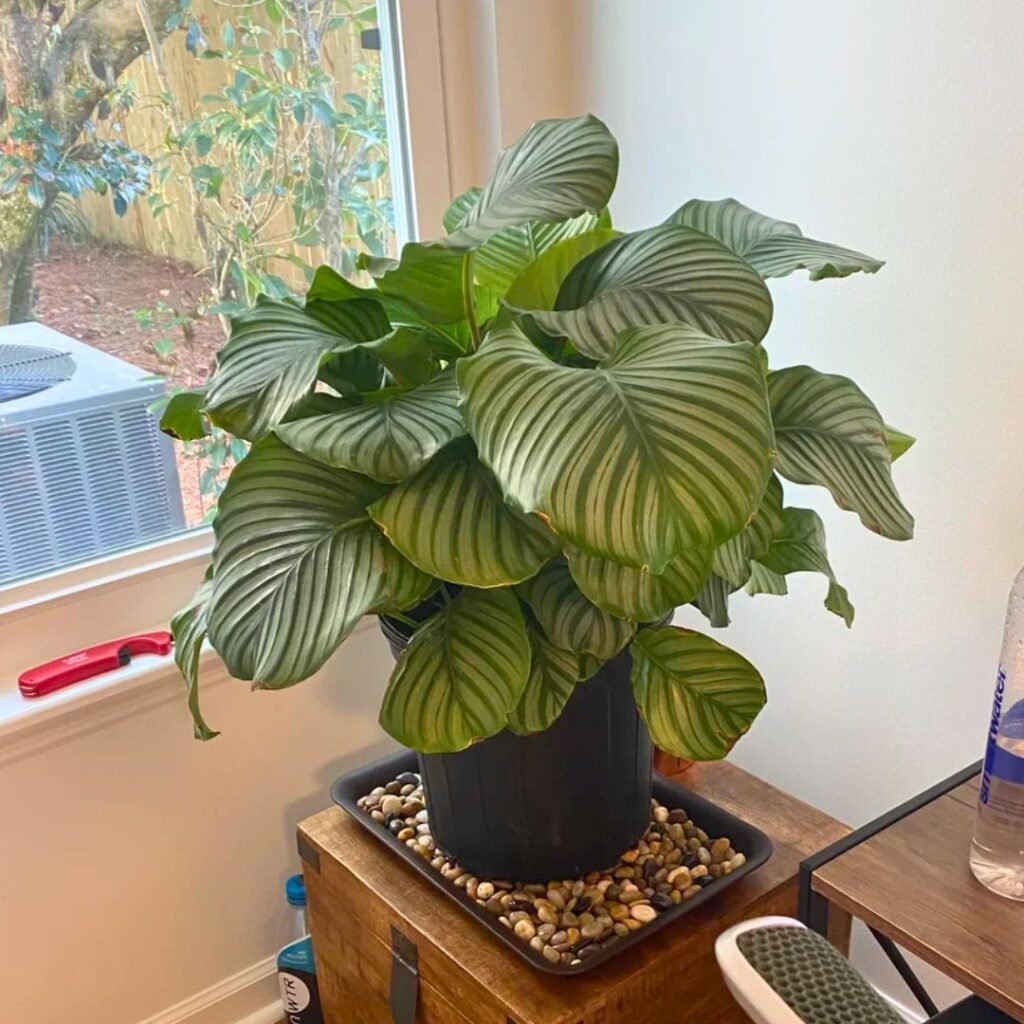
I’ve noticed that dry air can bother my houseplants, especially in winter. Plants like ferns and palms just want more humidity.
When my place feels dry, I use a simple pebble tray. I fill a shallow dish with stones, put the plant pot on top, and add water until it’s just below the top of the pebbles.
As the water evaporates, it gently raises the humidity around the plant. This avoids soggy roots and helps the leaves stay lush.
I check the tray every few days and top it off if needed. It’s easy, low-maintenance, and makes a real difference.
Pebble trays are best for small to medium plants that like extra moisture. I always make sure the pot has drainage holes, just in case.
If I group a few plants together with pebble trays, my plant corner feels more tropical. It’s a cheap trick, but honestly, it works.
6) Use Epsom salt solution every six weeks

I like to give my houseplants a little Epsom salt boost every six weeks or so. Epsom salt is just magnesium sulfate—magnesium helps plants make chlorophyll, which keeps leaves nice and green.
I mix one tablespoon of Epsom salt into a gallon of water and use it to water my plants. It’s safe for most houseplants, but I double-check if a plant has special needs before trying it out.
This trick seems to work best for leafy plants like ferns and pothos. I’ve noticed they look greener after a couple rounds, but I don’t go overboard—too much can cause salt buildup.
I keep the mix mild and stick to the six-week schedule. That way, my plants get just enough magnesium without any risk.
Epsom salt is cheap and easy to find. If my plant’s leaves start looking yellow or pale, I know it’s time for a dose. I try not to splash the solution on the leaves, just in case.
I only use this on mature plants, not seedlings. For me, it’s a simple trick that really seems to help. Nothing beats seeing bold, green leaves on happy plants.
Understanding Houseplant Growth
Healthy houseplants need the right setup to reach their full potential. Sometimes my plants grow fast, sometimes not so much—it really depends on how I care for them and what’s going on indoors.
Key Factors Affecting Growth
Light is a big deal for houseplants. Some want bright, direct sun, others are happier in the shade. I always check what each plant likes and try to find the best spot.
Watering is tricky. Too much and roots rot, too little and leaves get crispy. I poke my finger in the soil to see if it’s dry before I water.
The soil type matters a lot. I stick with well-draining soil for most plants, and special mixes for things like succulents or orchids.
Humidity is important too. Some plants, like ferns, want moist air. I’ll mist their leaves or set out a tray of water if my home feels dry.
Nutrients help plants grow. I add a balanced fertilizer every few weeks during the growing season, just to be on the safe side.
Common Growth Challenges for Houseplants

Yellowing leaves usually mean too much water or not enough light. If I see this, I tweak my care routine.
If a plant looks leggy or stretched, it probably needs more sun. I move it closer to a window but try to avoid harsh midday rays.
Pests like spider mites or aphids sometimes show up. I check under the leaves and either wash them off or use insecticidal soap.
Root rot happens if pots don’t drain well. I always use pots with drainage holes and empty the saucer so roots don’t sit in water.
Brown leaf tips can be from dry air or too much fertilizer. I trim them off and ease up on the plant food.
Paying attention to these little things really keeps my houseplants looking their best.
Troubleshooting Slow Growth
Sometimes, even with all the right care, my houseplants just stop growing for a while. I try to figure out what’s wrong and adjust things until they perk up again. It’s not always obvious, but with a bit of patience, most plants bounce back.
Recognizing Signs of Stunted Houseplants
Slow or no new leaves always catch my attention. If my plant just sits there, not doing much, I start to wonder what’s up.
Sometimes the leaves just stop getting bigger, or I hardly see any new ones at all.
When new leaves do show up, they’re tiny—way smaller than the old ones.
I’ll also spot yellow, pale, or brown leaves now and then, which usually means the plant’s stressed.
Roots poking out of the drainage holes or circling the inside of the pot? That’s another red flag.
Weak stems or droopy leaves, even after a good soak, make me pause.
If I notice leaves dropping for no clear reason, I know something’s off.
Soggy soil that never dries out, or dirt that’s bone dry for ages, both set off alarm bells.
At that point, I’ll dig around and check the roots and soil more closely.
Steps to Revive Underperforming Plants
First, I look at the light situation.
Plants shoved in dark corners just won’t thrive, so I move them closer to a window if I can.
Next, I rethink my watering routine—sometimes I’m overdoing it, sometimes not enough.
Getting the balance right can really help.
If the roots are all tangled up and circling the pot, I’ll gently repot the plant into something just a bit bigger, with fresh soil.
I’ll also give it a little diluted liquid fertilizer—not too much, just enough to perk it up.
Dead or yellow leaves get snipped off so the plant can focus on growing stronger.
I try not to fuss too much, but these steps usually help.
Checklist to Boost Growth:
| Action | Why It Helps |
|---|---|
| Move to brighter spot | Improves energy for growth |
| Adjust watering | Prevents root problems |
| Repot if rootbound | Gives roots room to grow |
| Light feeding | Provides important nutrients |
| Remove dead leaves | Reduces plant stress |
Frequently Asked Questions
I prefer simple, natural methods to keep my houseplants happy and growing.
Bright, gentle light and a few household tricks really do the job.
What are the best natural fertilizers to promote houseplant growth?
I reach for diluted fish emulsion once a month—it’s gentle and works well.
Sometimes I’ll toss in used coffee grounds or crushed eggshells for a little mineral boost.
How often should I water my plants to maximize their growth potential?
I just stick my finger in the soil.
If the top inch is dry, I water thoroughly, but I never let my plants sit in soggy soil—roots really hate that.
What are effective lighting strategies to boost my indoor plants’ growth?
My go-to is setting plants near east-facing windows for that soft morning sun.
I rotate them every week so all sides get some light, and if it’s still too dim, I’ll use a grow light.
Are there any household items I can use to help my plants grow bigger and stronger?
I like using a pebble tray filled with water under the plant to bump up humidity.
On dry days, I’ll mist the leaves with a spray bottle.
How do I know if my plant is getting the right amount of nutrients?
I watch for healthy new leaves and steady growth—that’s usually a good sign.
If things slow down or leaves turn pale, I know it’s time to tweak my fertilizing routine.
Dark green leaves? That’s when I know my plant’s pretty happy.
What are some common signs of over-watering and how can I avoid it?
Yellowing, mushy leaves—yeah, that’s usually a big hint you’ve gone a bit overboard with the watering can. If I spot this happening, I just let the soil chill out and dry up before giving it any more water.
Honestly, I always double-check that my pots have solid drainage holes. It really helps keep over-watering from turning into a bigger headache.
Recommended Garden Supplies
| Product Image | Our Recommended Gardening Supplies | Check Offers! |
|---|---|---|
Top Top
Top
Top
Top
Top
Top
Top
Top | rePotme Houseplant and Tropical Classic Potting Soil Mix | Check Offer On Amazon |
 Top
Top
Top
Top
Top
Top
Top
Top | Espoma Organic Indoor Plant Food | Check Offer On Amazon |
 Top
Top
Top
Top
Top
Top
Top
Top | GooingTop LED Grow Light 6000K Full Spectrum Clip Plant Growing Lamp | Check Offer On Amazon |
 Top
Top
Top
Top
Top
Top
Top
Top | Soil Moisture Meter | Check Offer On Amazon |
 Top
Top
Top
Top
Top
Top
Top
Top | Govee Hygrometer Thermometer, Bluetooth Enabled! | Check Offer On Amazon |
 Top
Top | LEVOIT Humidifiers for Large Room(Best For Plants) | Check Offer On Amazon |
 Top
Top
Top
Top
Top
Top
Top
Top | Upgraded DIY Automatic Drip Irrigation Kit, 15 Potted Houseplants Support | Check Offer On Amazon |
 Top
Top
Top
Top
Top
Top
Top
Top | Stainless Steel Heavy Duty Gardening Tool Set | Check Offer On Amazon |
 Top
Top
Top
Top
Top
Top
Top
Top | Bonide Insecticidal Soap | Check Offer On Amazon |
 Top
Top
Top
Top
Top
Top
Top
Top | Bonide 32 oz Spray Neem Oil for Organic Gardening | Check Offer On Amazon |
 Top
Top
Top
Top
Top
Top
Top
Top | Garden Safe Fungicide | Check Offer On Amazon |


